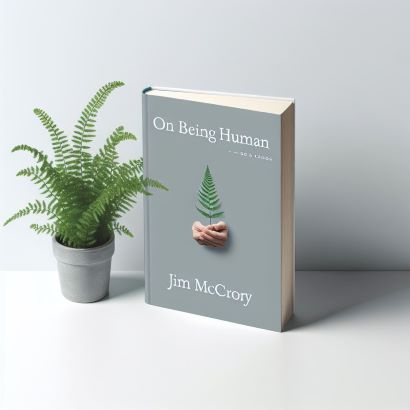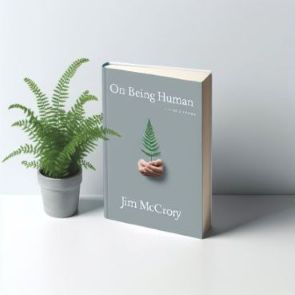
Image generated with the assistance of Microsoft Copilot
The Glasgow Necropolis
Where A Silent City Awaits
Walking
through the Glasgow Necropolis, I am reminded of its stillness as it sits over Mother Glasgow and silently observes the living. The gravestones and
monuments are weathered with time, others upgraded by forward generations who tell stories of
lives once lived. Each name etched in stone represents someone who walked these
streets, shared meals, and whispered secrets under Glasgow's grey skies.
Yet,
beneath those stones lie mysteries I cannot fully grasp. These people once
laughed, argued, hoped, and dreamed. They travelled, however far their lives
allowed, saw sunsets over the Clyde, and perhaps loved or lost in ways as
profound as we do now. What strikes me most is the thought of their
consciousness—that inner film reel of moments unique to each person. Where has
it gone?
Earlier
that day, as I arrived in Glasgow, I encountered a group of volunteers raising
funds for Pancreatic Cancer Action. They stood resolutely, braving the
November chill with their collection buckets and bright smiles. Each one no doubt had a
story, perhaps of this malady that robbed them and their family of so much life.
It
struck me that at one end of Glasgow, there were people fighting to stave off
death, channelling their concerns into hope and action. And yet, here in the
Necropolis, I stood among those who had already succumbed. The contrast was
sobering—on one hand, the fierce struggle to preserve life; on the other, the
stillness of its end.
The
Bible speaks of the breath of life, given and then taken away. In Ecclesiastes,
we read that the dead know nothing, their plans and thoughts extinguished with
their final breath. It’s an arresting image—this idea that what makes us who we
are is so intimately tied to the breath God gives us. The people buried here
had thoughts as vivid as mine, dreams that seemed so tangible, and inner worlds
so rich that they would have resisted reduction to mere dust. And yet, the
moment their breath left them, those worlds ceased to exist in the way we
understand.
But
as I walk these paths, I feel a sense of expectation, not hopelessness. Jesus’
words in John 5:28-29 echo in my mind: “Do not marvel at this; for the hour
is coming in which all who are in the graves will hear His voice and come
forth.” This promise fills the Necropolis with a strange kind of
anticipation. If Jesus’ words are true, then these lives are not extinguished
but merely paused, waiting for renewal.
What
does it mean to be worthy of such renewal? I think of the struggles these
people endured. Their gravestones hint at professions, relationships, and
sometimes tragedies. But their worthiness, as Jesus described it, is not
measured by accolades or wealth. It’s wrapped up in their relationship with
their Creator—the choices they made when confronted with love, kindness, and
faith.
The
volunteers reminded me of this worthiness. Their fight against cancer was not
just about extending days but about honouring the lives that had been lost.
Their stories, like those etched in stone at the Necropolis, were filled with
love, loss, and resilience. They stood as a reminder that the breath of life is
precious and must be cherished.
The
Necropolis reminds me that life is fleeting and precious. But it also whispers of eternity, of a future where these
lives may once again unfold in vibrant colour. The struggles we face, the meals
we share with loved ones, and the dreams we pursue are not lost forever. They
are held in suspension, preserved in the mind of God, who knows the secrets of
every heart.
Walking
among the graves, I feel a strange kinship with those who lie here. Someday,
someone may wander past my resting place and wonder about my inner world, too.
But the promise of resurrection bridges the divide between the living and the
dead, offering hope that this mystery called consciousness will one day
be restored, illuminated by the One who gave it life.


